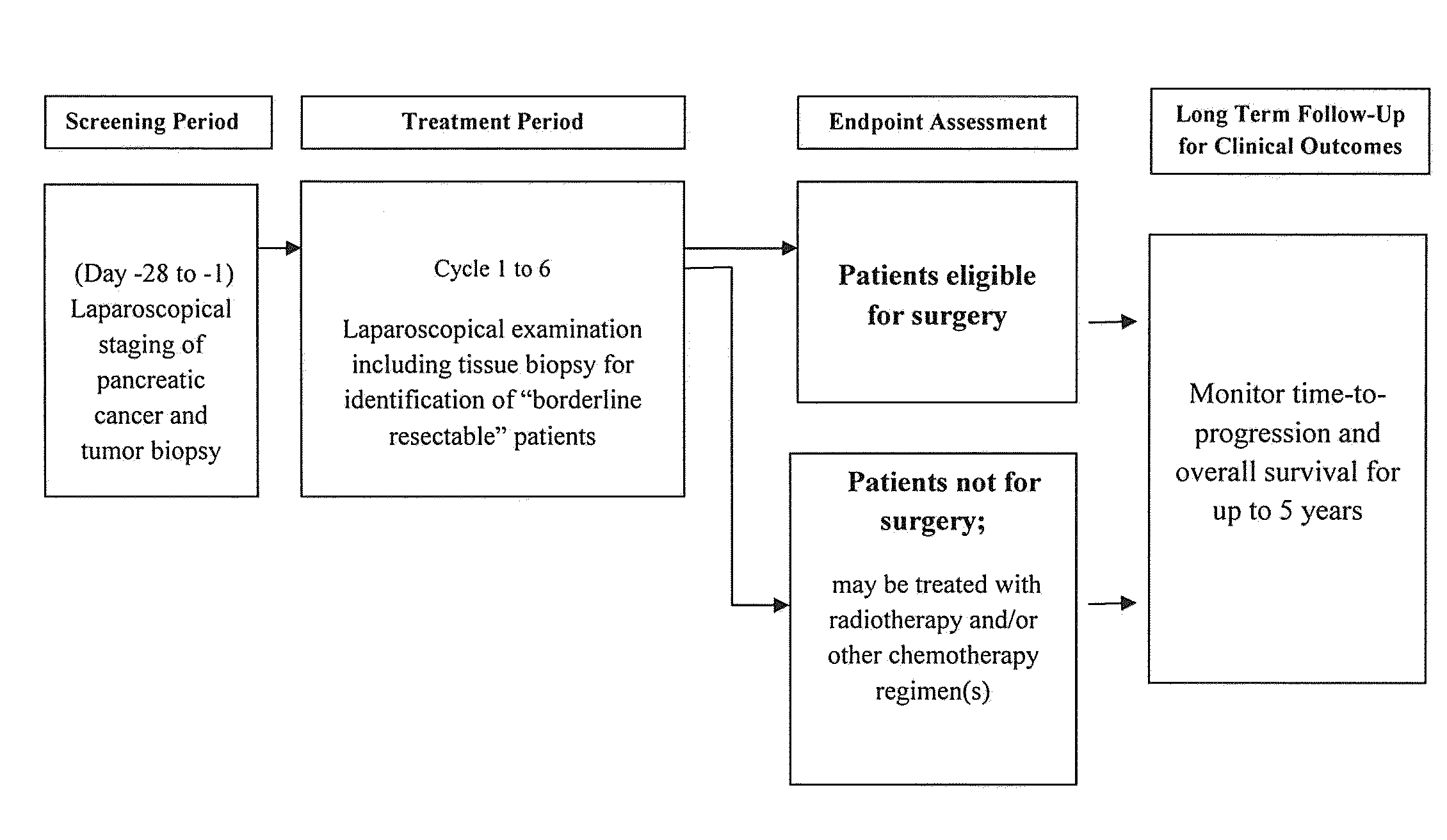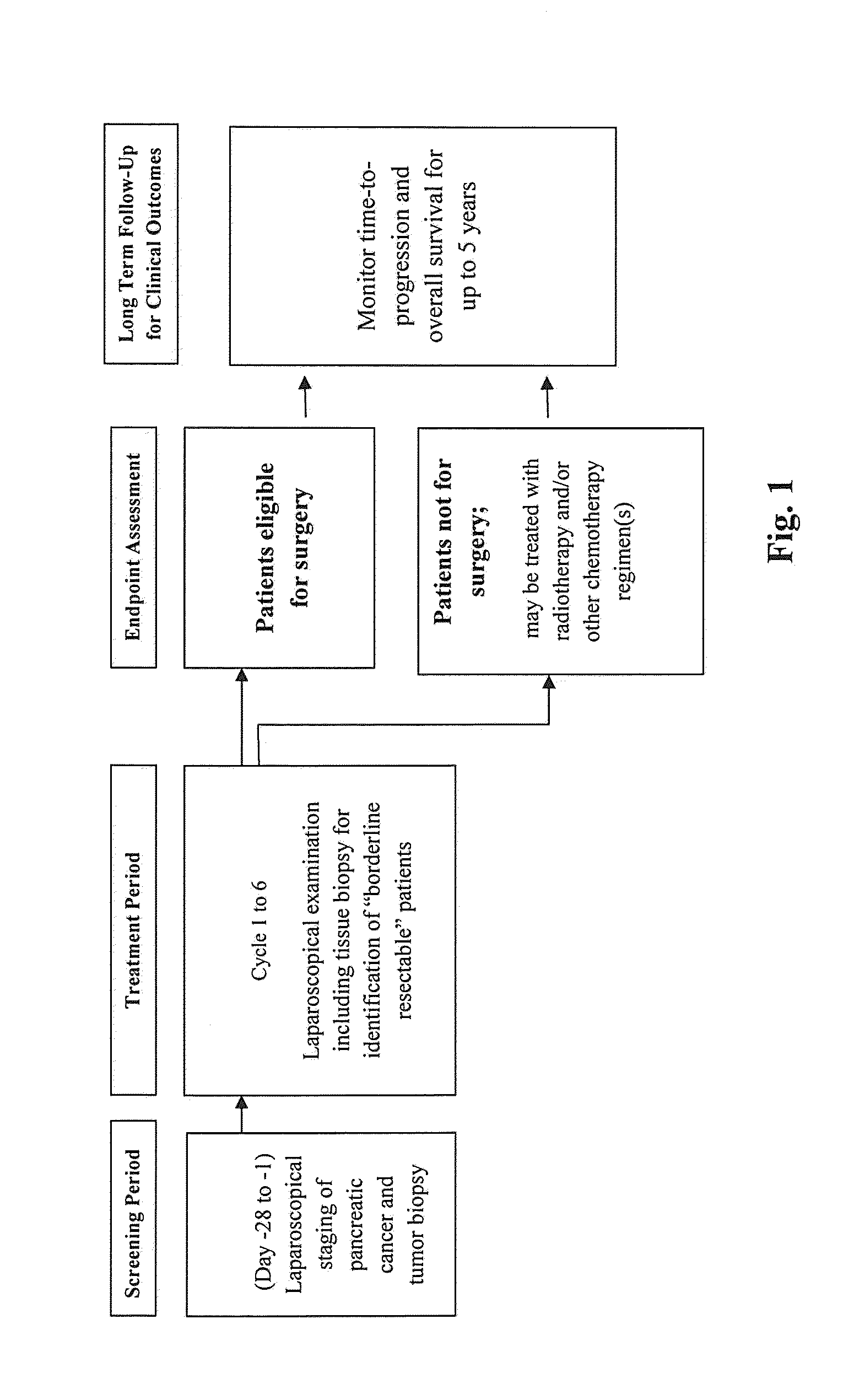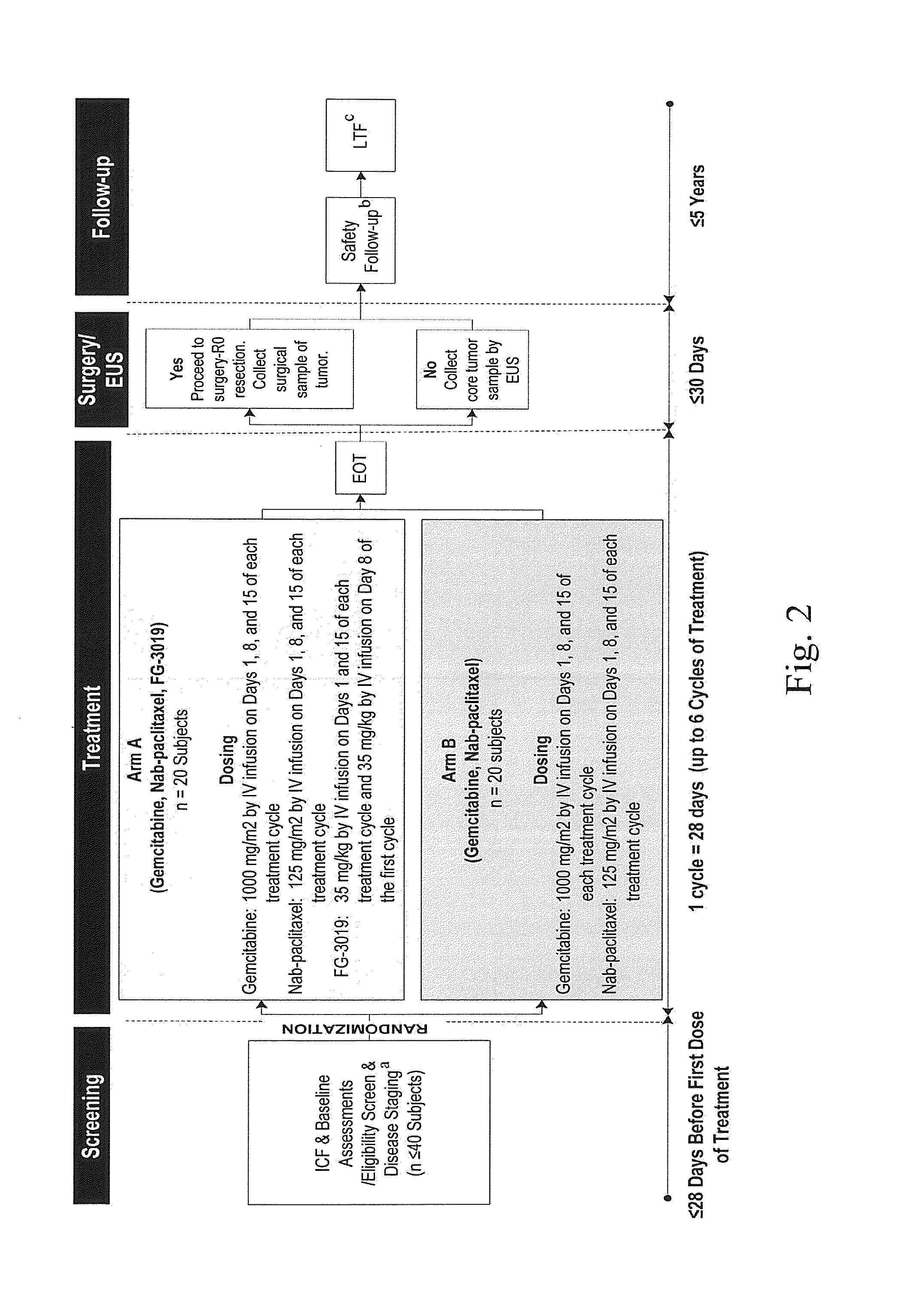Therapeutic method for pancreatic cancer
a pancreatic cancer and therapeutic method technology, applied in the field of pancreatic cancer therapeutic methods, to achieve the effect of increasing the survival rate of subjects, increasing the overall survival rate, and increasing the survival ra
- Summary
- Abstract
- Description
- Claims
- Application Information
AI Technical Summary
Benefits of technology
Problems solved by technology
Method used
Image
Examples
example 1
[0164]A Phase-1, open-label study is performed on 15 LAPC patients with unresectable disease. During an initial screening period, all patients are laproscopically staged and their tumor biopsied. Patients with no evidence of metastatic disease and having an unresectable tumor mass that appears to offer the potential to be converted (downstaged) to at least borderline resectable status are classified as eligible. Eligible patients receive up to six, 28-day cycles of induction therapy comprising the anti-CTGF antibody FG-3019, an antibody that is identical to CLN-1. The induction therapy also comprises an antimetabolite (gemcitabine) and a mitotic inhibitor (nab-paclitaxel). Following the completion of induction therapy, patients are laparoscopically restaged and their tumor biopsied. Patients that achieve at least “borderline” resectable LAPC status have their tumor resected. They are then followed for time to tumor progression (TTP) and overall survival (OS). Patients with disease p...
example 2
[0167]A Phase 2, randomized, open-label trial is performed to evaluate safety and tolerability of gemcitabine plus Nab-paclitaxel with the anti-CTGF antibody, FG-3019, (Arm A) compared to gemcitabine plus Nab-paclitaxel (Arm B) in subjects with locally advanced, unresectable pancreatic cancer. Up to 40 evaluable subjects are included in this trial.
[0168]The trial has four stages: 1) screening and disease staging; 2) induction therapy; 3) surgery or short-term follow up; and 4) long-term follow up. A schematic overview of the study, including study period timeframes, is provided in FIG. 2.
[0169]Primary study endpoints are the assessment of treatment-emergent adverse events, (TEAEs) serious treatment-emergent adverse events (TESAEs), clinical laboratory tests, and discontinuation of treatment for treatment-related TEAEs.
[0170]Secondary study endpoints are the proportion of subjects in whom R0 resection is achieved; surgical safety with respect to complication rates; FG-3019 plasma con...
PUM
| Property | Measurement | Unit |
|---|---|---|
| Fraction | aaaaa | aaaaa |
| Fraction | aaaaa | aaaaa |
| Capacitance | aaaaa | aaaaa |
Abstract
Description
Claims
Application Information
 Login to View More
Login to View More - R&D
- Intellectual Property
- Life Sciences
- Materials
- Tech Scout
- Unparalleled Data Quality
- Higher Quality Content
- 60% Fewer Hallucinations
Browse by: Latest US Patents, China's latest patents, Technical Efficacy Thesaurus, Application Domain, Technology Topic, Popular Technical Reports.
© 2025 PatSnap. All rights reserved.Legal|Privacy policy|Modern Slavery Act Transparency Statement|Sitemap|About US| Contact US: help@patsnap.com



